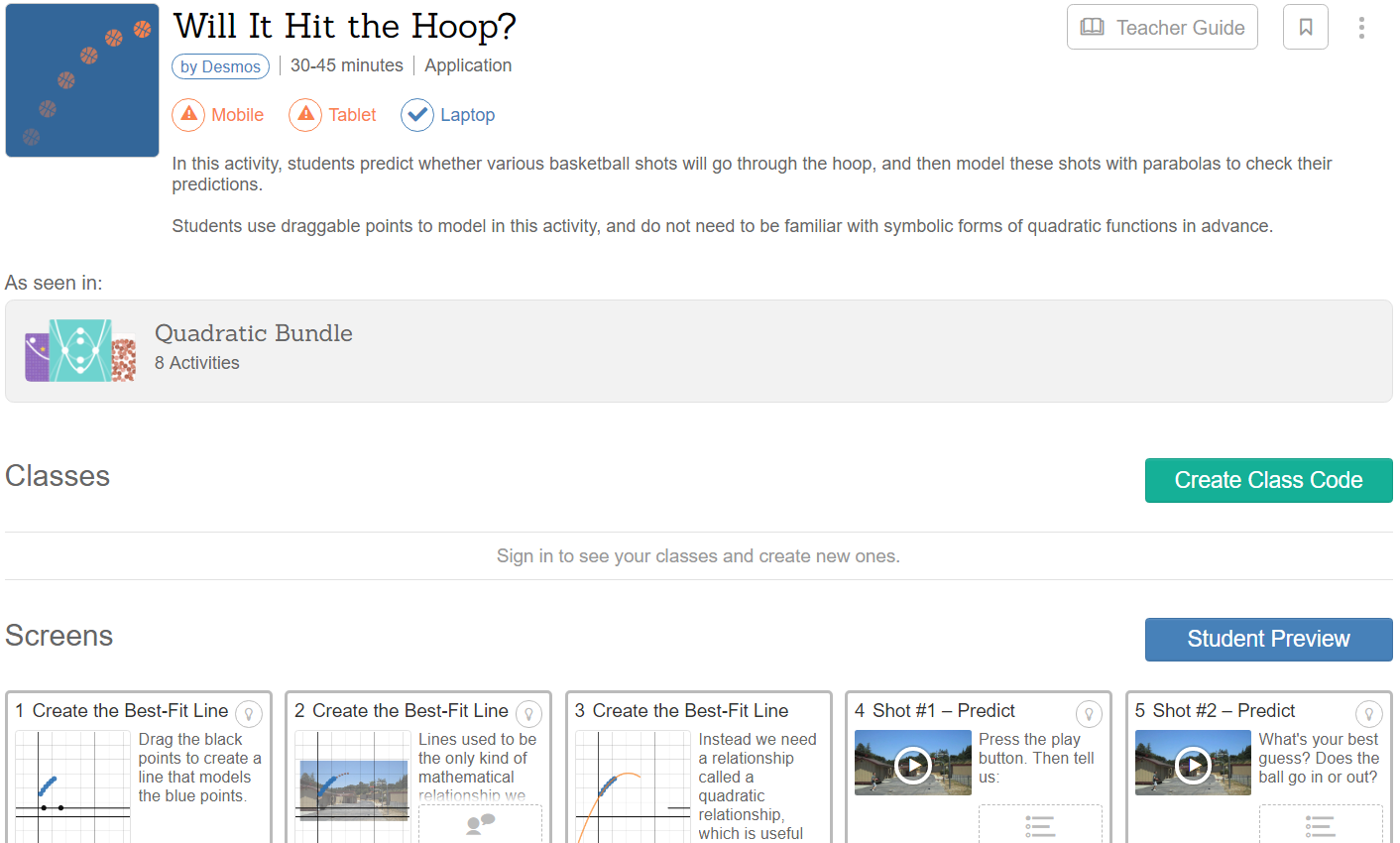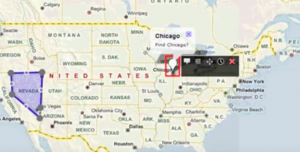The most precious and limited commodity in a school is time. Time rules every aspect of our school day from when we enter the building, to when we eat, when we learn, when we socialize. The careful calculation of legislated minutes allocated to specific subjects provides a regimented outline of the siloed subject taught in a sequence outcomes. You need to know this, and this is the amount of time you have to learn it. Now go. There is only enough time (and barely at that) to cover the specific learner outcomes. Traditional science classrooms account for this stop watch method of teaching by covering content through specific lectures and readings that are then applied in a structured laboratory experiment as evidence of understanding (Edelson, 2001). This memorization of inert knowledge is not taking hold in our students. Scientific discovery is meant to mesmerize…not memorize. We have taken the desire out of the learning and used the limited amount of time to effectively develop these rich learning experiences as our rationale (Bodzin, Anastasio, Kulo, 2014).
Scripted lessons teachers use are not motivating students. Inquiry and creativity in science allows us to veer away from the scripted lesson and ask questions that promote critical and creative thinking and might just be the key to changing students attitudes and enhancing achievement (Drapeau, 2014). Curriculum requirements can feel limiting and challenging. These challenges often are what forces inquiry lessons to be pushed to the side as an “enrichment activity”. We are hyperfocused on test scores as a sign of achievement. Yet we are reminded that scores do not tell us about what students imagine, believe, dream, or see…in other words their creativity (Loveless & Griffith, 2014). “We live in an era where test scores are mistaken for learning” and those test scores are too often considered the only indication of preparedness for future success (Spencer & Juliani, 2017, p.19). The fact of the matter is that the jobs of the future do not need “scientists who have memorized the periodic table”, they need creative and independent problem solvers (Libow Martinez & Stager, 2013).
We need to consider our students as thinkers not memorizers. Individuals capable of thinking about the world as well as impacting the world despite their young age (Banet-Weiser, 2007). They need a contextual experience to do this, and we have an opportunity to elicit this type of desire to know (Edelson, 2001). We have the opportunity to allow for true creativity, exploration, and making meaning through scientific discovery if we embrace the diverse perspectives in our schools and authentically use digital tools to play with ideas and not simply use technology for simple investigation (Edelson, 2001; Loveless & Griffith, 2014). We have an opportunity as educators to make a case for creativity and make the time needed to create a learning environment that promotes true and deeper learning. (Robinson & Aronica, 2016).
Exploring the My World and ARcGIS I was reminded of technology like Google Earth that allows for us to have an environment emphasizes hands-on, real-world learning, which engages students using authentic tools for exploration (Perkins, Hazelton, Erickson, & Allan, 2010). Since the upgrade and re-release of the New Google Earth in 2017, students have access to the world at their fingertips anytime, anywhere, on any device.
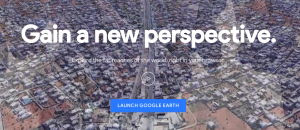
The new interactive tool menu allows for students to to go beyond simply searching the world. The Voyager feature has built in educational adventures for teachers and students to explore, expanding their spatial literacy while they use the tool to manage, visualize, and interpret information, skills that are vital to advance science and technology and address the world’s complex problems (Perkins, Hazelton, Erickson, & Allan, 2010).
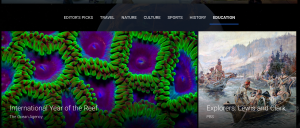
The “I’m Feeling Lucky” feature allows for students to roll the dice and be transported somewhere in the world to discover creating a true example of eliciting a desire to learn and explore.
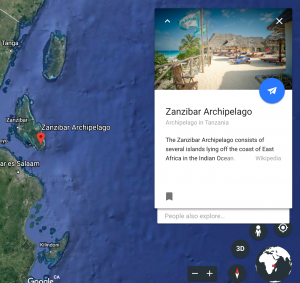
Beyond the surface map exploration, students can also use the Street View person to go inside the map and look around in 360 degrees.
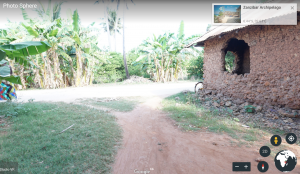
All of these features combined made me think of the LfU model where there are opportunities to Motivate, Construct, and Refine through a technology enhanced experience. Just recently I was working with a group of junior high students to explore natural disasters and extreme geographical phenomena such as extreme weather. Beyond a simple memorization of why volcanoes erupt, we decided to start a unit of inquiry called Build it Back Better. In this inquiry we needed to understand the inner workings of the earth science behind earthquakes, hurricanes, volcanoes and other disasters so that we could examine communities that were affected as a result. Our task was to help suggest improvements of design to these ravaged communities by helping them not just build back, but build back better. Our knowledge of earth science was needed to justify our recommendations and designs. I have broken down the lesson using the LfU framework below.
Build it Back Better – a Google Earth Inquiry of Natural Disaster and the Impact on Communities
| Motivate | Create a demand for the new knowledge and elicit curiosity | Natural disasters occur everyday. Many of our own communities and culture have recently experienced these tragedies as many of our families are from the Philippines, Taiwan, and Italy. More than just news stories, these are real events impacting real lives. We took time to search and list well known disasters due to extreme weather and geological events. How can we help communities build back better by using what we know about how these events are caused. We started a Google Site for our project and chose a topic of interest (Volcanoes, Hurricanes, Earthquakes or others). Our goal is to research how these events occur and to choose a geographical region that was impacted by the disaster. |
| Construct | Learners have direct experience observing novel phenomena and communicating to build new knowledge structures | We question the causes of the disasters, are they naturally occurring phenomena or caused by human impact? Using the New Google Earth https://www.google.com/earth/ students are invited to explore the locations of these events and take a closer look at the region. The students captured before and after pictures from specific events, found current 360 degree images of the region, and researched the scientific causes of the extreme event. This information was gathered in research teams and collaboratively organized on the shared Google Site. |
| Refine | Learners apply their knowledge in meaningful ways and reflect on their learning | Students then needed to use all this information to come up with a plan. What suggestions and ideas for rebuilding in a specific community do we have, and why did we make those suggestions? Students created a Google Drawing of their plan to include on their site. |
This project was hugely motivating and personal for the students. They had a desire to know. The students took very seriously improving and protecting these communities and as a result greatly improved their understanding of the “mandatory” science curriculum. This whole project was done by a group of special needs students who typically are dragged through memoization of print material. Taking the time to construct a learning task like this truly mesmerize the students and they learned more than simple memorization could have provided.
Trish
References:
Banet-Weiser, Sarah , (2007). “We, the people of Nickelodeon”: Theorizing empowerment and consumer citizenship. In Kids Rule! : Nickelodeon and Consumer Citizenship (pp. 1-37). Durham, NC: Duke University Press.
Bodzin, A. M., Anastasio, D., & Kulo, V. (2014). Designing Google Earth activities for learning Earth and environmental science. In Teaching science and investigating environmental issues with geospatial technology (pp. 213-232). Springer Netherlands.
Drapeau, P. (2014). Sparking student creativity: Practical ways to promote innovative thinking and problem solving. Alexandria, VA: ASCD
Edelson, D.C. (2001). Learning-for-use: A framework for the design of technology-supported inquiry activities. Journal of Research in Science Teaching,38(3), 355-385
Libow Martinez, S., & Stager, G. (2013). Invent to Learn: Making, tinkering, and engineering in the classroom. Torrance, California: Constructing Modern Knowledge Press.
Loveless, D & Griffith, B. (2014). Critical Pedagogy for a Polymodal World. Sense Publishers. Read Chapter 1, Pages 1- 22
Robinson, K., & Aronica, L. (2016). Creative schools: The grassroots revolution that’s transforming education. NY, NY: Penguin Books.
Spencer, J., & Juliani, A. (2016). Launch: Using Design Thinking to Boost Creativity and Bring Out the Maker in Every Student. San Diego, California: Dave Burgess Consulting.
